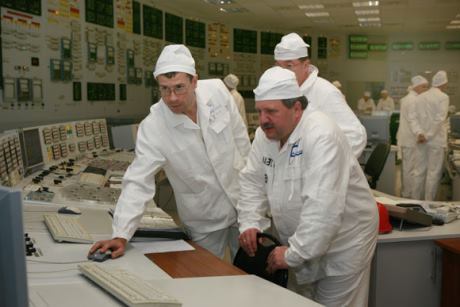Restored RBMK back on line
02 December 2013
Leningrad 1, the oldest operating RBMK unit, has been reconnected to the grid after the completion of work to resolve deformation of its graphite moderator.
 |
| Leningrad 1 is reconnected to the grid (Image: Leningrad NPP) |
The 925 MWe unit had been off line since May 2012 because of problems related to deformations in the graphite blocks making up its moderator. The 18-month project to restore the moderator included research, experimental and operational phases, including the development of specially designed machines and monitoring systems. Various Russian institutions including NIKIET NRC Kurchatov Institute, VNIIAES, EREC, VNIIEF, Institute of Mechanical Engineering and Engineering Company Prologue, Diakont and NIKIMT-Atomstroy were involved in the project.
The RBMK is a light water-cooled reactor with individual fuel channels surrounded by the graphite blocks that form the reactor's moderator. Each channel is individually cooled by water which is allowed to boil in the tube. Since the 1986 Chernobyl accident, extensive measures have been implemented to improve RBMK safety. Today, 11 RBMKs remain in operation, all of them in Russia. Four first-generation units, Leningrad 1 and 2 and Kursk 1 and 2, have been operating since the 1970s. Leningrad 3 and 4, Kursk 3 and 4 and Smolensk 1 and 2 are second-generation units and all started up in the 1980s. Smolensk unit 3, which started up in 1990, was completed to third-generation standards.
Leningrad plant director Vladimir Pereguda praised his staff's commitment to the project, describing the unit's 'rebirth' as a major event for both the station and the Russian nuclear industry. Meanwhile, Rosatom first deputy director Alexander Lokshin said the event marked a 'significant milestone in the history of RBMK.'
Similar work to that carried out at Leningrad 1 will now be undertaken at the remaining RBMKs.
Researched and written
by World Nuclear News